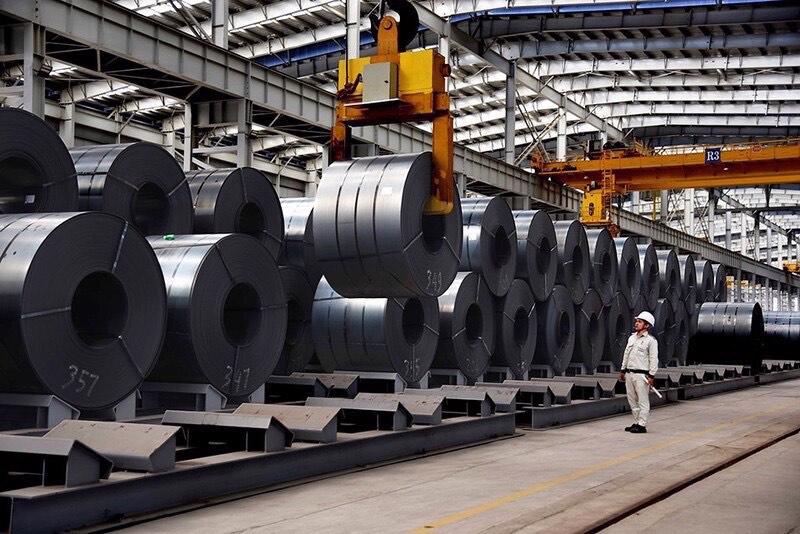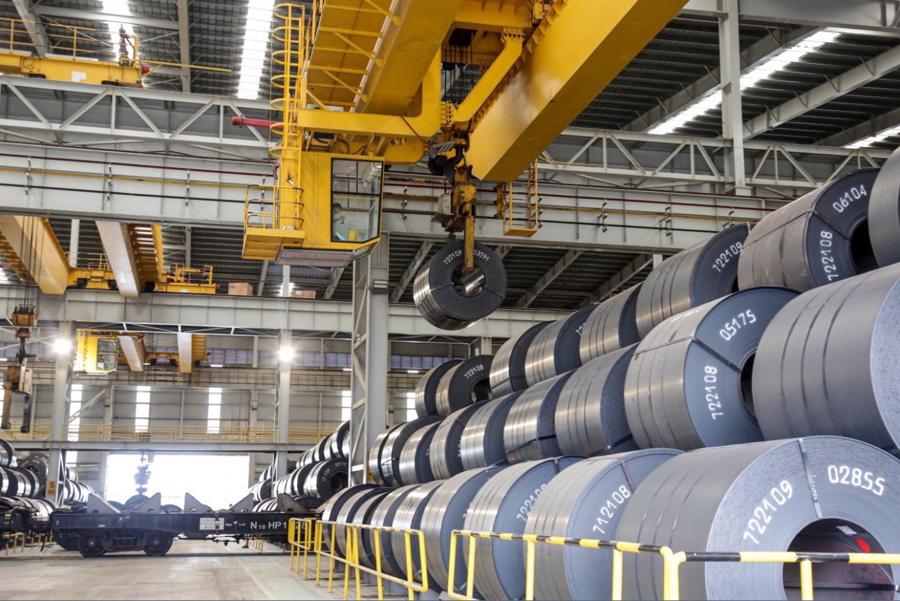Rising demand and export trends fueling HRC import growth
According to data from the General Department of Vietnam Customs, Vietnam imported 886,000 tons of hot-rolled coil in June alone, which is 151 per cent of domestic production, with those from China making up 77 per cent.

Vietnam’s imports of hot-rolled coil (HRC) totaled nearly 6 million tons in the first half of 2024, a 32 per cent increase year-on-year. This represents 173 per cent of domestic production, with 74 per cent coming from China and the remainder from Taiwan (China), South Korea, India, Japan, and elsewhere.
In a recent petition to the Ministry of Industry and Trade, eight domestic coated steel and steel pipe companies, including the Hoa Sen Group, TVP Steel, the Ton Dong A Corporation, Nam Kim Steel, Phuong Nam Steel, Binh Duong Steel, the Le Phan Gia Binh Duong Manufacturing Co., Ltd, and Viet Thanh Long An Steel, attributed the surge in HRC imports to insufficient domestic supply.
Vietnam’s demand for HRC in 2022 and 2023 was 11,525,018 tons and 11,593,973 tons, respectively. However, the combined production capacity of the two domestic HRC producers - Hoa Phat and Formosa - currently stands at only 8.2 million tons per year. Even if they produced at maximum capacity and sold exclusively domestically, without exporting, they still could not meet domestic demand.

In reality, both Hoa Phat and Formosa export a significant proportion of their HRC production. According to a Vietnam Steel Association report, these companies increased their HRC exports significantly in 2023 compared to 2022, resulting in a sharp decline in domestic HRC sales.
Total HRC sales by Hoa Phat and Formosa in 2022 and 2023 were 6,192,018 tons and 6,808,337 tons, respectively. HRC exports, meanwhile, increased dramatically, from 1,304,198 tons in 2022 to 3,405,633 tons in 2023, an increase of 2,101,435 tons.
Due to this increase in exports, domestic HRC supply in 2023 fell sharply compared to 2022. In 2022 and 2023, domestic HRC supply was 4,887,820 tons and 3,402,704 tons, respectively, a decline of 1,485,116 tons and meeting only 42 per cent and 29 per cent of Vietnam’s HRC demand. This exacerbated issues surrounding the already inadequate domestic supply.
In the first half of 2023 and 2024, Vietnam’s HRC demand totaled 4,992,657 tons and 7,429,755 tons, respectively. However, domestic HRC supply in the two periods was 1,696,004 tons and 2,131,026 tons, respectively, meeting only 34 per cent and 29 per cent of total demand in Vietnam.
HRC imports in the first half of 2023 and 2024 were 3,296,653 tons and 5,298,739 tons, respectively. The increase this year was necessary to meet growing demand, as domestic supply rose only 435,022 tons.
Countries like India have enacted policies to reduce steel exports, resulting in a sharp decline in HRC imports from these countries into Vietnam. In the first half, HRC imports from other countries fell 165,632 tons compared to the same period of 2023. Therefore, Vietnamese coated steel and steel pipe companies have had to increase their HRC imports from China to: (1) meet the increased import demand of 2,002,076 tons due to insufficient domestic supply, and (2) compensate for the reduction in HRC imports from other countries. As a result, HRC imports from China in the first half of 2024 increased 2,167,708 tons compared to the first half of 2023.
Industry experts suggest that despite Vietnam’s ability to produce HRC, it still cannot meet domestic demand. According to the Vietnam Steel Association, its total HRC demand is around 12-13 million tons per year, but domestic production capacity is only 8.2 million tons per year. Thus, Vietnam still needs to import HRC to meet domestic demand. Imports from China temporarily address the shortfall in domestic supply and the fewer imports from traditional markets.

According to the Trade Remedies Authority of Vietnam, the domestic steel industry will continue to face challenges in competing with Chinese imports due to small production scales and high production costs. Many steel products in the country also still rely on raw materials imported from China.
Most domestic steel enterprises currently produce only basic steel products for the real estate industry and cannot yet produce high-quality products. It will take five to ten years before Vietnam can produce steel for the mechanical engineering industry, such as steel for car bodies and ship hulls.
In response to the surge in HRC imports, the Vietnam Steel Association has proposed that State agencies strengthen trade defense and technical measures to protect domestic production and create a fair competitive business environment. However, this proposal has not received consensus among member enterprises, as eight coated steel and steel pipe companies have continuously sent rebuttal arguments to the Ministry of Industry and Trade, the Trade Remedies Authority, and relevant agencies.
Hot-rolled coil is a critical product for the steel industry, serving as a raw material for producing galvanized, cold-rolled, and color-coated steel, steel pipes, and other steel products used in various applications in construction, mechanical engineering, and other industrial sectors.







